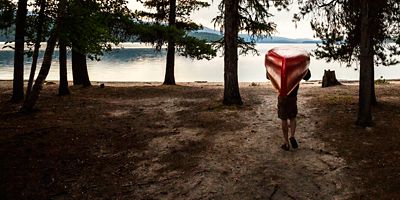But there are a handful of tricks and technique fundamentals to make your outing more safe, efficient and enjoyable, from proper posture to different strokes. Before heading too far out, practice these different strokes by paddling around in alternating circles. To get even better, sign up for a lesson or a guided trip (check with your local paddling shop). Start off with a few of the following pointers.
Paddle Grip
Grab your paddle loosely with hands shoulder-width apart, with the blade’s “scoop” facing you (otherwise known as the blade’s power face). Note: If you’re using asymmetrical paddle blades, make sure the longest part of the blade is on the top, lined up with your knuckles.
Posture
Don’t slouch. While many kayaks have backrests, sit up straight to get into the active paddling position. Keep your hips loose and relaxed, with your head and body balanced over the kayak and hands out front. Picture your arms, chest and paddle forming a box.
Power
Instead of just using your arms, rotate your entire torso for each stroke by twisting at the waist. This harnesses the most power, utilizing your whole upper body, including shoulders, back and stomach muscles.
Turning and Leaning
If you’re moving forward and your boat turns—either by catching a current, the wind or from executing a turning stroke—lean your boat into the turn so your outside edge doesn’t catch (i.e. lean right if you’re turning right, and left if you’re turning left). For additional support, place your paddle blade flat to the water’s surface and out in front of you on the same side that you’re turning toward.
Forward Stroke
This is the stroke you’ll use most often. Twisting your body, reach one blade forward toward your feet and place it in the water; twist back to pull the blade to your hips. Take the blade out when it reaches your hips and repeat on the opposite side.






